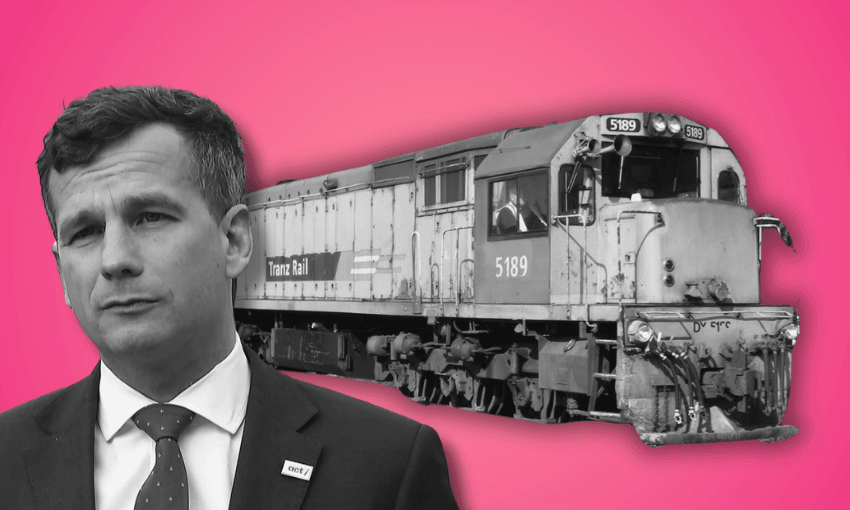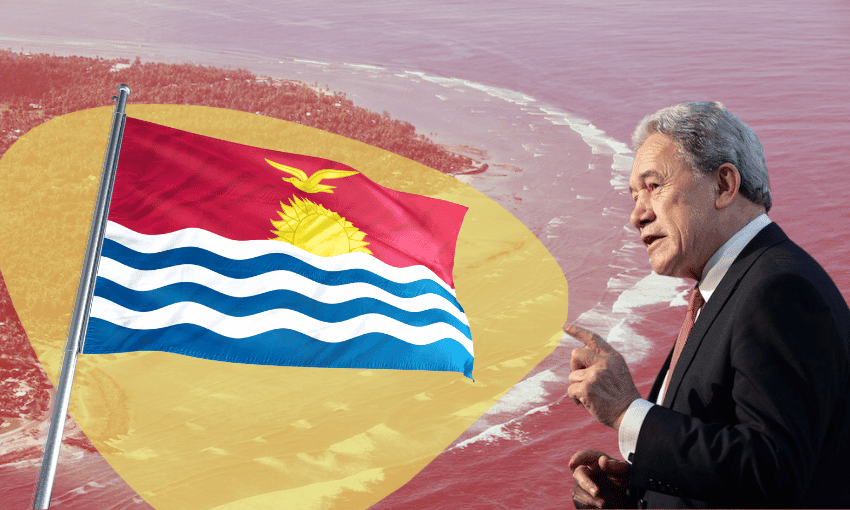When public services are failing, it’s easy to look to privatisation. But that doesn’t mean we should, argues Max Rashbrooke.
It was, as the economist Bill Rosenberg observed, “a conflict of interest fit for a post-Soviet state”. In 1993, financiers Fay Richwhite were allowed to advise the government on the sale of the state-owned New Zealand Rail – and then be one of main shareholders in the winning bid.
After that things really went downhill. Privatised TranzRail had an appalling safety record, its staff dying at work at eight times the national average. And while cutting maintenance to a level Rosenberg labelled “abysmal”, Fay Richwhite and their fellow owners took out at least $370m in profits from a firm for which they had paid just $328m. Helen Clark’s Labour government was then forced to repurchase the railways, creating KiwiRail as we now know it. The whole episode cost the state around $4bn, according to then business commentator Brian Gaynor.
Rampant conflicts of interest, asset-stripping, disastrous outcomes, profits flowing offshore to wealthy interests rather than ordinary New Zealanders: this might be why, as David Seymour observed last week, New Zealanders are “squeamish” about privatisation. Not that the soon-to-be deputy PM has learned anything from those debacles: indeed he thinks we should plunge ourselves right back into them.
Of course the contours of the state – the services and assets it provides and owns – will change over time. But a regularity of the last forty years, following the worldwide deluge of privatisation in the 1980s and 90s, is that handing over core public functions to the private sector generally ends in failure.
The maddest examples have come when monopolies – water, rail – have been sold to private firms, even though competition is the only thing that makes markets work. A private monopoly is the worst of both worlds: no competition-based incentives to improve, and no public-good ethos pushing the organisation to look out for citizens’ interests.
Hence, in the UK, privatised railways have been such a disaster – massively increasing costs with no corresponding rise in quality – that, 30 years later, Keir Starmer’s Labour government is finally bringing them back into public ownership. Even worse has been the privatisation of British water services, whereby firms have extracted tens of billions of pounds in shareholder dividends, hiked water fees and discharged large amounts of effluent into local waterways. (Unsurprisingly, a global meta-review by Spanish and American researchers found no “genuine empirical effect of cost savings” from privatisation.) Across the border, publicly owned Scottish water has achieved better performance while reducing operating costs 40% and at times cutting water charges.
The story repeats: privatised bus companies, the OECD concluded, are cheaper than public ones only because they cut wages. Ditto private prisons.
Closer to home, we have the example of not just TranzRail but also energy generation. Even when three of them were fully state-owned, the “gentailers” that supply our electricity were able to operate rather like a cartel, generating excess profits and freezing out potential competitors. Now that Genesis, Meridian and Mighty River Power are 49% privatised, matters do not seem to have improved: insufficient new generation has been installed and sky-high prices have forced plant closures.
Of course it’s not just assets that Seymour wants to privatise, but services too. He’d like health and education to operate like markets: you get a voucher for a fixed amount, and you spend it on whatever provider you want.
The problem here is the long list of failures stemming from such attempts. US healthcare – not voucher-based, admittedly, but the nearest thing the developed world has to a private health system – is a catastrophe, costing twice as much as most health systems but delivering worse outcomes. Administrative waste in US healthcare – generated by every private player trying to shift the cost onto another – is so great that it would pay for every uninsured American to get insurance. It is also greater than the entirety of Britain’s NHS budget.
In education, vouchers – and other market-friendly ideas like charter schools – have been shown time and again to fail. Charter schools don’t deliver better results than traditional public ones, a US meta-review found, while the failings of American voucher systems led one libertarian commentator, Megan McArdle, to despairingly conclude they were “not a cure-all, or even much of a cure for anything”.
Why does privatisation so often fail? There is a basic philosophical issue: public services – health, education – are things people deserve as of right, as a basic entitlement of citizenship. They are not the equivalent of buying, say, another item of clothing, and treating them as mere consumer goods risks degrading their deep importance.
There are, secondly, concerns about fairness. If, as is often the case, privatisation means charging for something once paid out of taxes, it is likely to have a harmful effect on poorer households.
But perhaps the most fundamental problem is that privatisation generally doesn’t “work” – that is, it doesn’t deliver a given quality of service more efficiently than public ownership. Why not? Because although actual markets work like markets, most other things don’t.
People don’t generally know what healthcare they need; in education, research suggests “competition” between schools is often driven either by parents making calls based on external factors like uniforms, or by prejudiced views about keeping their kids away from certain other children. It also turns out to be extraordinarily difficult for regulators to make companies do what they say they will (deliver services more innovatively) and stop them from doing what they often want to do (reduce wages, cut corners and extract excess profits). Competition can also stop teachers and schools sharing lessons and best practice with each other.
Even when privatisation can theoretically work, it takes careful effort. Privatising the old Telecom in the 1990s, for instance, made a certain sense, because competition in telephone services – and now, of course, mobile and broadband – was both possible and desirable. But, like TranzRail, it was sold relatively cheaply to a consortium that immediately stripped out billions of dollars of profits, and then abused its dominant position until the 2000s Labour government intervened to ensure genuine competition.
Why, given privatisation’s manifold failures, does it retain even a shred of political relevance? Partly because it suits certain interests. But partly because of a political void where the alternative should be.
The truth about many of New Zealand’s state assets and public services is that they are not in ideal shape. The health system is in turmoil, and our school results have been falling for decades. TranzRail’s publicly owned replacement, KiwiRail, does not seem to operate especially well.
Opponents of privatisation, then, can get left looking like defenders of an inadequate status quo, lacking feasible reform ideas. When pressed, they often invoke the public-service ethos of teachers and nurses, but while this is a powerful force it is surely not enough by itself. Public sector staff, though capable of immense acts of service, have also been known to focus on their own organisation’s interests or act disdainfully towards citizens.
Spending more is the other answer generally advanced. Again, this has some merit: New Zealand would, for instance, spend billions more on health if it simply matched the OECD average, and this would undoubtedly fix many problems. But we cannot simply pour more money into systems that are not necessarily spending those funds efficiently.
One answer, I think, lies in what political scientists call voice. Private firms improve through choice: the threat that a consumer might choose an alternative forces them to lift standards. Public agencies, as monopolies, can’t draw on choice. So they must turbocharge their responsiveness to voice: the considered views of the public acting as citizens.
This responsiveness could take multiple forms. Renationalised bus companies could be made accountable to bus users’ forums. Services like healthcare could be “co-created” with patients. All public agencies should be required to survey their citizen-users about their experiences – were they given all the information they required, for instance? – with severe consequences for agencies recording low scores. Democratically run local energy companies – copying the successful German model – could be adopted.
We could also entrust frontline public servants with more responsibility, putting them in charge of locating efficiencies and potential innovations. And we could give service users greater autonomy, for instance by allowing people with disabilities more control over what mix of public services they receive. None of this would be straightforward. But in the absence of a clear alternative, privatisation will continue to look far more appealing than its actual record suggests it should.





